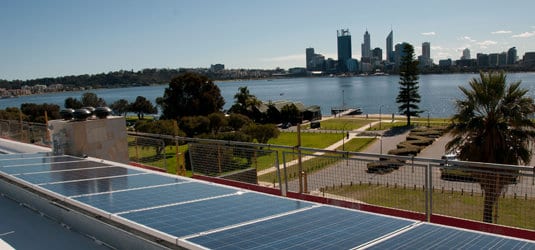
The Australian Solar Council has launched a campaign to challenge a proposed doubling of grid connection charges for solar households in Western Australia. An annual connection charge of AU$800 (US$585) has been proposed by government-owned utility Synergy.
The debate over recognizing the true value of grid services has heated up in Australia, with the monopoly utility supplying households in the state of Western Australia proposing an annual grid connection charge of AU$800. The Australian Solar Council has launched a campaign to push back against the proposed charge, describing it as an “unfair solar tax.”
The Australian Solar Council says the issue is of national significance as solar households are targeted by grid operators and utilities ass free riders, enjoying grid services however not paying their fair share due to their reduced gross annual consumption of electricity.
“This is a travesty of justice, hurting families who just want to reduce their power bills,” wrote the ASC in a mailing to its members. “Solar family taxes are being pushed right across Australia. Enough is enough. It’s time to fight back.”
The ASC has run similar campaigns in the past, particularly targeting the government led by former Prime Minister Tony Abbott. After centrist Malcolm Turnbull successfully challenged Abbott for the Prime Ministership in September, the ASC suspended its Save Solar campaign, as an act of goodwill towards the new administration.
The ASC says that its latest effort will repurpose the Save Solar campaign and target it towards “big power companies.”
State owned utility Synergy supplies West Australian households, in the populous southwest of the state. Together with the grid operator Western Power, the two have been annual requiring taxpayer subsidies running into the hundreds of millions as grid costs increased and aging generation assets required refits. The attempt by Synergy to increase fixed grid connection charges is an attempt to reduce the required subsidy, and is expected to deliver around AU$160 million (US$117 million) annually.
Electricity networks in Australia have also been overbuilt, often described as ‘gold plating,’ as utility electricity demand forecasts predicting ever-increasing demand, when in fact it has fallen.
“The basic problem we have is that of the electricity that’s delivered to the home, about 80% of it is fixed cost, about 20% is variable,” Synergy Chairman Lyndon Rowe told the Australian Broadcasting Corporation. “On the other hand, the tariff you pay – about 20% is related to the fixed charge and about 80% is variable, so it’s the reverse.
What that means is that there are a number of cross subsidies in the tariff structure, so either people being subsidized by other users or people being subsidized by taxpayers.”
Increasing fixed charges has been suggested in a number of markets globally where growing residential rooftop solar has resulted in falling gross demand. In an Australian context, high peaks in residential electricity demand continues to be observed on some parts of the grid, requiring large grid capacities.
While seen by utilities as an easy fix to the challenge of falling revenues while high levels of grid services are still required, it may also incentivize distributed battery storage with large capacities, as households choose to disconnect from grids. Well documented as resulting in a death spiral for utilities, such an outcome would likely be a sub-optimal outcome for households, utilities and taxpayers alike.
Western Australia recently changed regulations to allow battery storage with grid feed in on its networks.
“Obviously network economics is very challenging,” explains the University of New South Wales’ (UNSW) Iain MacGill, “but there are certainly a lot of cross subsidies. That is a fairly explicit intent of market design since the establishment of the electricity industry. There is always the risk that particular technologies get picked out, but if tariffs should really be cost reflective then it should be focused on different technologies’ impact on network costs, in a very transparent way.
MacGill, in the Joint Director of Engineering for UNSWs Center for Energy and Environmental Markets. He says that a greater level of transparency is also required in terms of the levels of peak demand throughout Australian electricity grids and the costs of accommodating this.
The ASC is currently calling for donations for its revamped Save Solar campaign.
pv magazine has launched a series on the storage market in Australia: Storage Down Under. The December edition of pv magazine includes a feature on the solar+storage adoption in the Australian market.
Source: PV Magazine. Reproduced with permission.










